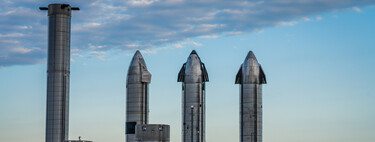On the morning of Sept. 1, 2016, SpaceX experienced one of the most devastating and controversial incidents in its history. A Falcon 9 rocket, which was vertical on the launch pad, suddenly exploded while carrying the Israeli satellite Amos-6. CEO Elon Musk attributed the incident to the company’s direct rivals.
A violent explosion. This was one of the first times SpaceX operated the Falcon 9 rocket using cryogenic propellants. The technique involves supercooling the fuel and oxidizer to enhance performance.
Before the launch, SpaceX had planned a static ignition test, a routine procedure where the rocket’s engines are tested while the vehicle is secured to the pad. However, everything went wrong eight minutes before the ignition was scheduled. The rocket transformed into a massive fireball, and the payload was completely destroyed.
Making Mark Zuckerberg mad. The Amos-6 satellite wasn’t an ordinary payload. Meta CEO Mark Zuckerberg had paid $200 million. Facebook had signed a deal to provide free Internet access in Africa through the Israeli satellite.
Following the explosion, Zuckerberg publicly said he was “deeply disappointed.” His comments didn’t sit well at SpaceX, where morale was already low. According to Ars Technica, this incident contributed to the deterioration of the relationship between Musk and Zuckerberg, which eventually led Musk to delete the Facebook pages for SpaceX and Tesla years later.
The sniper theory. One of the most troubling aspects of the incident was Musk’s theory of a sniper’s intervention. According to recent documentation, SpaceX consistently insisted on this theory throughout the official investigation.
While SpaceX engineers considered hundreds of hypotheses, Musk championed the idea of external sabotage, specifically that a sniper had fired on the rocket. Although it may sound far-fetched, Musk pointed to the fracture of the rocket. It had begun around 200 feet above the ground, on the side facing a building leased by its main competitor, United Launch Alliance (ULA). ULA is a joint venture of Boeing and Lockheed Martin.
A purported ULA sniper. The ULA facility was located about a mile from the SpaceX launch pad, which could be considered a reasonable distance for a sniper to operate. According to some accounts, there appeared to be a flash on the roof of the ULA building at the same time it would take for a projectile to reach the rocket.
At that time, the rivalry between SpaceX and ULA had peaked. ULA still dominated the market for military and government launches, arguably the most lucrative contracts. However, SpaceX had recently won a court battle for the right to compete for these lucrative contracts. Still, making accusations of sabotage against a competitor without credible evidence isn’t a trivial issue.
FBI’s intervention. Prompted by Musk, SpaceX engineers conducted a thorough inquiry into the sniper theory. They sought access to the ULA roof and performed test firings against pressurized helium tanks to determine if they would explode like the Falcon 9 rocket.
The insistence on this theory was so strong that the Federal Aviation Administration had to step in with a letter denying any third-party involvement. There was no sniper, despite journalist Eric Berger’s findings in his book Reentry, which revealed that even the FBI looked into the case.
Federal agents reviewed SpaceX’s analysis and video footage, concluding that there were “no indications to suggest that sabotage or any other criminal activity played a role in the September 1 Falcon 9 explosion.” With this conclusion, the FAA considered the matter closed.
What happened next? The real cause of the explosion of the rocket and the Amos-6 satellite was traced back to the propellant loading process. In their eagerness to speed up the refueling with supercooled kerosene and liquid oxygen, SpaceX crews filled the helium tanks too quickly. This caused the rocket’s aluminum cladding to heat, warp, and ultimately rupture.
SpaceX’s “load and go” procedure, which involved placing astronauts on the rocket before fueling, drew criticism from NASA’s safety office. However, this strategy eventually demonstrated the reliability of the Falcon 9, which completed 137 launches in 2024 compared to ULA’s five. As a result, SpaceX became NASA’s primary provider for manned launches to the International Space Station.
Image | SpaceX



